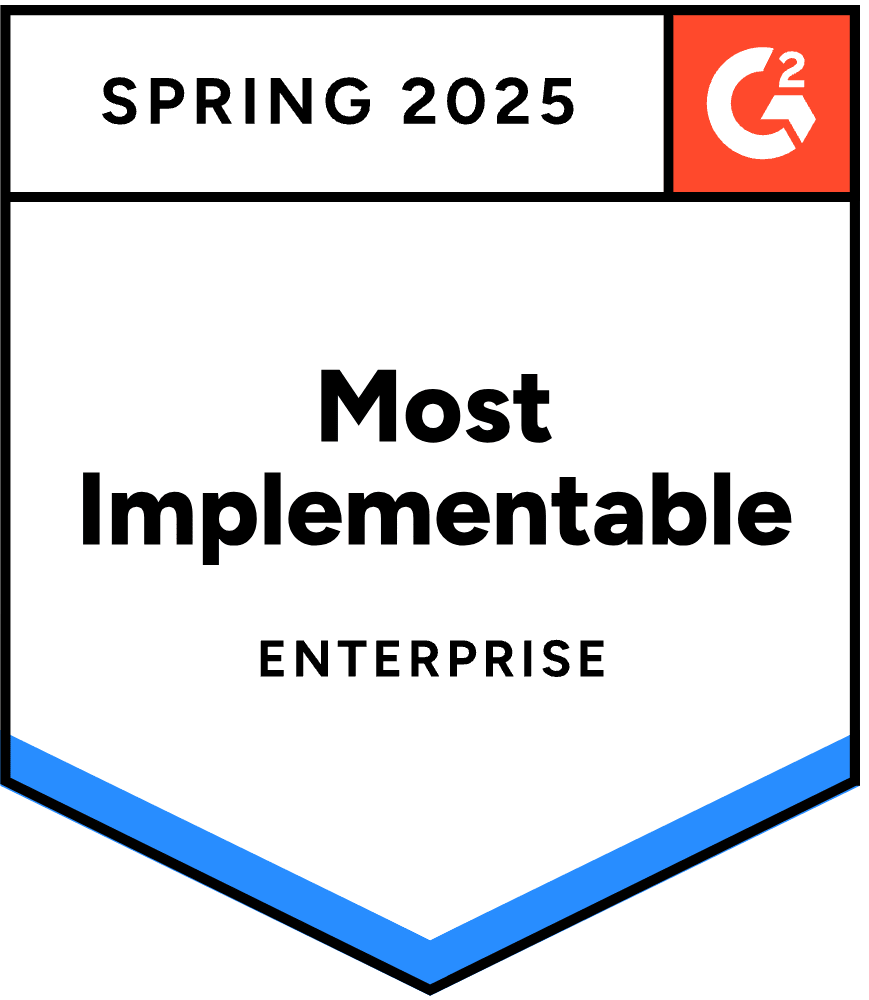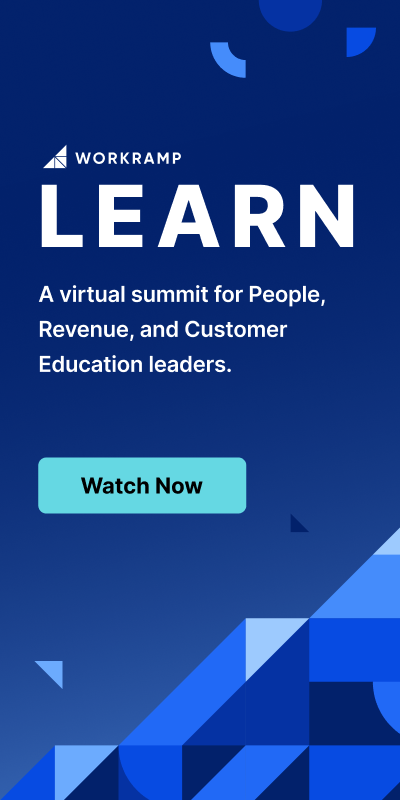What is Multimodal Learning? Examples, Strategies, & Benefits
Elise Dopson | WorkRamp Contributor
View bioLearning Tips Straight to Your Inbox
Learning and development (L&D) is a top priority for organizations—but not everyone learns the same way. Some employees are visual learners, others retain more through hands-on experiences, and many prefer reading or listening. That’s where multimodal learning comes in.
Multimodal learning involves using a mix of instructional methods—visual, auditory, reading/writing, and kinesthetic—to meet different learning preferences.
By incorporating multiple formats, organizations can boost engagement, improve retention, and create inclusive training programs that resonate with every learner.
Here’s how to put multimodal learning into action and build a development plan that works for your entire team.
In this post:
TL;DR
- Multimodal learning is a teaching approach that uses multiple sensory modes—like visual, auditory, and kinesthetic—to engage learners.
- It supports better engagement, retention, and inclusivity across teams.
- You can apply it with techniques like gamification, real-life case studies, multimedia content, and blended learning programs.
What is multimodal learning?
Multimodal learning is about teaching using multiple channels to effectively teach visual, auditory, kinesthetic, and reading-focused learners. By having various types of content in corporate training, companies can help all employees learn more productively.
For example, a single training module might include a narrated video (auditory), written instructions (reading/writing), diagrams (visual), and a hands-on application exercise (kinesthetic). This approach ensures that everyone has a way to connect with the material.
The importance of multimodal learning
Because individuals absorb material differently, multimodal learning can help team members feel more connected to lessons and content by engaging multiple learning styles.
Additional multimodal learning benefits include:
- Keeps learners engaged. Incorporating multiple methodologies enables learners to absorb and retain content no matter their learning styles, which helps the whole team stay engaged with the course.
- Allows learners to apply the teaching to real-life situations. When learners can immediately apply learning in a real-world context, they’re not only using kinesthetic learning, but they improve their retention of the material and are better able to solve real-world problems with it.
- More variety. Multimodal learning allows instructors to be creative with course content and makes learning fun as learners engage with different content types rather than being stuck with one mode of learning. This, in turn, encourages creativity in learners as they apply the material to their work.
- Learner autonomy. Learner autonomy allows employees to choose their own training path, using on-demand training modules to address their most pressing needs. When these modules address multiple learning styles, new information is easier to retain and use.
Types of Multimodal Learning (VARK Explained)
Multimodal learning is based on the VARK model, which helps you understand how individuals learn and retain information. Although most people benefit from a mix of learning styles, most tend to have one dominant style.
Visual
This type of employee learns best by seeing images and information. Visual learners are often keen observers; seeing a graphical representation of information can help it click and make sense. Visual learners often picture things in their minds when solving a problem.
Effective visual learning resources include multimedia content like flowcharts, diagrams, infographics, flashcards, and images with different fonts and colors. Videos can also be excellent for a visual learner.
Auditory
Auditory learners retain information from listening and speaking. Also known as verbal learners, these employees need to hear concepts stated out loud to grasp and remember the information.
Effective learning strategies include group discussions, listening to podcasts or recordings of meetings, Q&A sessions, and holding debates.
Auditory learners may have to talk through their ideas before reaching a conclusion, so it’s important to be patient and allow them to process the new information.
Reading/writing
These team members prefer to take in and receive information displayed as text. They remember what they read and write better than the images they see or what they hear.
Learning strategies for reading/writing employees include providing written user manuals or textbooks, listicles, having the learner write an essay about a topic, and written handouts. Encourage reading/writing learners to take notes on training sessions, highlight materials, and use mind mapping to connect ideas.
Kinesthetic
This is the most common single learning style, although over half of all learners have multiple learning styles. Kinesthetic team members learn best by doing things themselves through hands-on activities.
Great strategies for kinesthetic learners include interactive role-playing, doing projects using new information, holding demonstrations, having learners conduct surveys, and hands-on field trips.
Understanding how your team absorbs, makes sense of, and retains information will help you create a learning culture that supports and engages your employees with less frustration. You’ll also avoid investing time and resources into training that isn’t helpful for your team.

Examples of multimodal learning
What does it look like, practically speaking, to create learning content that can speak to multiple learning styles?
Here are three examples of engaging learning content that can help your organization with every step of learning, from onboarding to customer education programs.
Gamification
Gamification is a highly effective learning tool because it allows employees to engage with the material and provides a sense of accomplishment and progress during the learning process. When learners are having fun and getting immediate feedback, they’re more likely to retain the information.
How do games impact each learning style?
- Games generally include a graphic element, which helps visual learners stay engaged and understand information
- It’s easy to include audio in games, which helps auditory learners listen to new concepts and grasp them
- Read/writer learners can be engaged by having to enter answers or by interacting with text-based elements like written instructions and dialogue
- Kinesthetic learners benefit from games that allow them to apply new concepts in realistic scenarios
Games also generally have a repetitive element, which is easier for learners to embrace in the context of a game than in daily life. For example, this repetitive element—repeating the challenge on increasingly more difficult levels—helps all learning styles reinforce and retain the new information.
Real-life cases
Applying new information in a realistic scenario is one of the most powerful ways to reinforce learning. A learning and development program can include case studies, simulations, or challenges to apply the new skills in the employee’s daily work.
Real-life cases are clearly excellent for kinesthetic learners, but they can also benefit other learning types:
- Visual learners have a chance to see what the new skills look like in action, whether through a demonstration or case study or by doing it themselves
- Read/write learners can read about previous cases or read instructions on how to perform the new skill in their work. They can also take notes or create a written checklist
- Auditory learners can record audible instructions or repeat the instructions in their own voice. They can also be paired with another employee to explain the process to their colleague
Immediate application of new information is a key way to help employees retain information, which makes employee training far more effective.
Multimedia content
Using multimedia allows you to appeal to multiple learning styles in the same piece of content. For example, a video can have images, sound, and text to appeal to three of the four learning styles.
When using multimedia content:
- Take advantage of graphics to connect with visual learners
- Have written text, subtitles, and boxes for typed notes to work with read/write learners
- Use sound and speech to communicate well with auditory learners
- Include demonstrations and hands-on applications in the content to connect with kinesthetic learners
Multimedia content allows you to share new information with multiple learning types quickly and easily.
Benefits of multimodal learning in corporate training
Creating training content that uses multiple learning modalities has a variety of benefits.
Most individuals learn well from more than one modality, so you can make information especially easy to understand by appealing to multiple learning styles.
Customized learning
It’s frustrating when you’re trying to learn something that isn’t tailored to your needs. Having multimodal learning helps training courses be more accessible to everyone on your team, no matter what type of learning they prefer.
When you’re creating on-demand training programs, applying to multiple senses is especially important because it’s easier to get distracted during computerized training. A multimodal approach will help keep everyone engaged.
Finally, multimodal learning allows people with challenges in one of their senses, like hearing or sight, to still be able to learn by using other senses for the training program.
Better retention
We all know that hearing something twice helps us retain it better than hearing it once. Multimodal learning allows employees to be exposed to a message multiple times at once, through multiple senses.
For example, a training video can portray the new information visually by demonstration, audibly using a voice explaining the process, in text through a written description or subtitles, and kinesthetically by inviting the learner to try the process themselves at the end.
This gives everyone multiple opportunities to learn and retain information, rather than just one, leading to improved retention and engagement.
Online accessibility
Using a computer to access online training is undeniably convenient but can be challenging for some people. It’s easy to get distracted or bored, and staring at a screen can be hard on the eyes and the learner’s focus.
Multimodal learning makes training more engaging, which makes it easier to gain more from online learning. That allows your team to make training modules available to employees whenever and wherever they need it.
A learning management system like the Learning Cloud from WorkRamp makes it easier to offer online training with multimedia content that appeals to multiple learning styles so your workforce can receive and retain all the information they need to excel.
Disadvantages of a multimodal learning style
The primary disadvantage of using multiple media types to appeal to every learner is that it can be overdone.
A training module with too much text and audio and too many images can be overwhelming. An application exercise for every concept can slow learners down and complicate the course.
It’s important to be measured about how you apply multimedia content and other concepts to your training courses. You’ll have engaging, memorable content when you find the right balance between simplicity and appealing to all learning styles.
Multimodal learning strategies
Once you’ve identified the most popular learning styles based on the VARK system, here’s how to create a multimodal learning environment that engages them.
Determine preferred learning styles
The first step is to analyze your employees’ preferred learning styles. Not only does this help create an effective learning environment that all team members engage with, but it will also support how you communicate with your team.
Encourage employees who already know their learning style to share this information. For those that don’t, distribute the VARK questionnaire and spend some time analyzing your employees’ preferred style.
One learning style may be more popular than the rest. Use the results from the questionnaires as your foundation for creating an effective learning environment.
Let’s put this into practice and say an HR team produced an online training lesson—in video format—on how to use a meeting and goal-setting platform. A week later, three team members failed to pass an evaluation on how to use the platform. They prefer to learn kinesthetically (i.e. by doing.) Sitting down to watch a 30-minute video presentation wasn’t engaging for them; they could not focus and failed to take in the information.
Provide online training with practical exercises to create a multimodal learning environment that caters to these team members. Though their training will still be online, it will include opportunities to test new learning and practice using real-life examples suited for visual and kinesthetic learners.
Implement a learning management system
Next, it’s important to have a learning management system that can serve as a foundation for all of your training needs, from onboarding and sales enablement to employee development and customer education.
When you have a robust multi-purpose platform like the Learning Cloud, you can maximize your return on investment by centralizing your organization’s training needs.
The best learning platforms allow you to get started quickly by offering prebuilt content your L&D team can easily customize to your specific needs. There should also be helpful integrations, metrics tracking, and clear reporting.
Customize your learning plans
Once you’ve created your learning plans, you’ll want to customize them to meet your team’s specific needs. That might mean including more audio if you have a lot of auditory learners or making it easy to take notes if there are many read/writer learners on your team.
However, don’t lean too heavily into one learning style, even if it is dominant on your team. Most people learn best when there are multiple learning modes, so be sure to mix things up to keep content engaging and interesting.
Repurpose your content
Meeting the individual learning styles of your employees takes time, effort, and patience. Instead of producing materials in various formats, repurpose the content you have to cater to different learning styles.
For example, when onboarding new staff and bringing them up to speed with compliance training, host a webinar, record it, and produce a transcript. It simultaneously caters to two learning styles—visual and reading—without investing too much time in producing each format individually.
Once you’ve repurposed these training materials, choose an intuitive learning management platform that allows flexibility for different learning styles. The Learning Cloud, for example, allows you to upload videos, text, quizzes, and checklists to your online learning modules.
Host employee workshops and huddles
Some team members learn best through doing. Workshops and huddles are perfect for this type of kinesthetic learner. It can also be helpful for those who learn verbally, as they can gain new insights when they explain ideas to others.
Use a fun icebreaker exercise to get your employees moving around during workshops, or provide problem-solving exercises based on real-life situations.
For example, host a 30-minute training session where each team member updates passwords in real time if you’re training your team on cybersecurity. Recall previous examples in your workplace and use these as a format for learning. Have team members explain why specific cybersecurity measures are important.
Leave space for questions and answers at the end, with plenty of discussion opportunities catering to kinesthetic and auditory learners.
Try blended learning techniques
Blended learning allows you to use in-person and online training to improve skills and teach new concepts. This gives you the benefits of in-person interaction and the convenience of online learning simultaneously.
During blended learning, think about what parts of the training make the most sense to do in-person, and what parts fit better in online modules. That will help you plan an effective course with the best of both worlds.
Involve employees in their development
Get your team involved in planning and creating training to start conversations about the learning methods that best engage them.
Remember: employees are the people taking part in the learning programs. They’re bound to have great ideas that help fine-tune the learning environment, such as:
- The preferred delivery method
- The length of training
- The best day and time to host training
Not only does involving employees in decisions surrounding your learning programs make them feel important, but it also helps produce training materials your entire team enjoys. Also, teams will be more invested in completing and implementing training courses they helped design.
Prioritize employee well-being
Quitting reached an all-time high in 2022, largely because employees were looking for better working conditions.
Providing learning opportunities that don’t resonate with preferred learning styles won’t help motivate your workforce. Employees will disengage and be more likely to leave your organization.
Employee well-being should be at the heart of your learning environment. For example, online training allows employees to pace their learning based on existing commitments. Offering employees shorter, targeted learning experiences based on their preferred learning styles helps them thrive in the workplace.
With the right mode of delivery, employees can master new skills while also developing the strategies needed to support their well-being.
Evaluate the success of your program
Do you know whether your learning environment encourages team members to participate in workplace L&D? Join the 27 percent of L&D professionals who evaluated their programs in 2021 and re-engaged employees by incorporating different learning styles.
Regularly collect feedback from your team and group their responses by learning style. For example, you may notice that kinesthetic learners don’t understand your workplace health and safety video content, which can help you improve it.
Use the metrics in your learning management system to track training module completions, resulting work improvements, and more, segmented by learning style. This can help you make adjustments if you’re missing something in your training programs.
Ultimately, creating training with employee learning styles in mind makes L&D more effective, keeps learners engaged, and improves learner retention.
Improve your multimodal learning environment
Whether you’re training new hires or existing employees, a multimodal learning environment keeps the entire team up to date with skills and knowledge. Uncover how your team prefers to learn and make future training programs engaging and enjoyable for everyone.
With WorkRamp, you can create and deliver effective employee and customer training programs that appeal to multiple learning styles.
FAQ:
What are the 4 types of multimodal learning?
The four main types of multimodal learning, based on the VARK model, are:
- Visual – learning through images, diagrams, and visual cues
- Auditory – learning through listening and speaking
- Reading/Writing – learning through written words and note-taking
- Kinesthetic – learning through hands-on experience and physical activity
How does multimodal learning improve retention?
Multimodal learning improves retention by engaging multiple senses at once, allowing learners to absorb information in the way that works best for them. When learners hear, see, read, and apply information simultaneously, they’re more likely to understand and remember it.
What is the VARK model in learning?
The VARK model is a framework that categorizes learning preferences into four types: Visual, Auditory, Reading/Writing, and Kinesthetic. It helps educators and L&D teams design training that supports different ways people absorb and retain information.
What are examples of multimodal learning in the workplace?
Examples include:
- Training videos with captions and follow-up quizzes
- Hands-on workshops combined with written guides
- Interactive simulations or gamified lessons
- Real-life case studies paired with team discussions
✅ Ready to engage your teams with multimodal learning? Contact us for a demo today.
Complete the form for a custom demo.
Recent Posts
- Onboarding with an LMS: How to Set New Hires Up for Success July 16, 2025
- Why Secure LMS Platforms Are a Must for Regulated Industries July 10, 2025
- Top LMS Integrations That Power Smarter, Faster Learning July 2, 2025
- Introducing WorkRamp Analytics Studio: Unlocking Your Data Insights with AI June 30, 2025
- 11 AI LMS for AI-Powered Learning June 27, 2025
Elise Dopson
WorkRamp ContributorElise Dopson is a freelance writer for B2B SaaS companies. She’s also the co-founder of Peak Freelance and mom to an adorable Spaniel pup.
Ready to Get Started?
Get in touch to learn how WorkRamp can help you achieve your training goals.
Request a Demo





